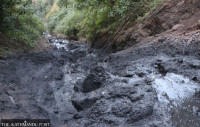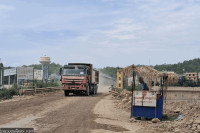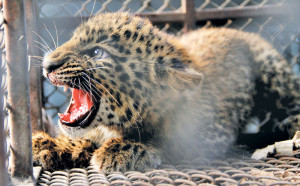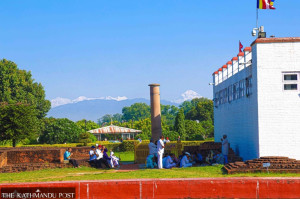Lumbini Province
Bardia National Park counts on technology to protect its wildlife
Park officials say using technology has helped control illegal activities inside the park while they intensify anti-poaching operations ahead of the festive season.
Chandan Kumar Mandal
Bardia National Park has turned to technology to protect its valuable wildlife and check illegal movement of people inside the park and prevent poaching activities.
As part of this initiative, the park, which is home to the second largest population of tigers in the country, has installed cameras at critical locations to track movements inside core areas.
According to Ashim Thapa, information officer at the park, there are 64 CCTV cameras installed at crucial locations to track the movement of people as well as wild animals.
“These cameras have been installed over the years and placed in areas where people and wild animals move about frequently,” Thapa told the Post from Bardia. “These cameras have been placed in core areas as well as on the outskirts to keep a watch on suspicious movements around the park.”
The CCTV footage is closely monitored by a joint command operation cell consisting of Nepal Army and park officials. Likewise, the park has also set up 50 camera traps to observe the movement of wild animals and study their behaviours, according to Thapa.
“These cameras have been placed inside core areas as well as near the East-West Highway to study how wild animals roam the area,” said Thapa. “These are the same cameras used during tiger counts, but these cameras have been installed to study their behaviour.”
In addition to this, the park has been relying heavily on eight spy cameras used to also monitor activities outside the park.
“These cameras are placed secretly and are also frequently moved from one location to another,” said Thapa. “These cameras have been really handy in capturing the movement of poachers and intruders inside the park.”
The spy cameras are connected to the internet and footage is sent to officials via email. Once the pictures are received, security forces and park officials are immediately mobilised, according to Thapa.
Bardia National Park, spread across 968 sq km, is home to 87 tigers, 29 one-horned rhinos as per their respective latest census of 2018 and 2015. The park has seen a remarkable increase in tiger population over the years. But the park continues to face conservation challenges, especially from poachers.
“With the help of our spy cameras, we could track and capture people carrying woods, fishing nets, axes, and other local poaching gear,” said Thapa. “During the lockdown, such movements and activities were rampant. People had entered without permission. We could capture people red-handed inside the park. We have even filed cases against such culprits.”
Joint teams from the park and the Nepal Army also conduct ground-level sweep operations frequently. Each post has to conduct two sweeping operations every week, according to Thapa. Also, realtime smart patrolling has also been going on in Bardia Park to minimise potential threats to wildlife.
“We have been implementing all these measures to discourage movement inside the park,” said Thapa. “But we had seen an increase in such activities during the lockdown when outsiders were entering the park. The threat is still there as the festive season has come, and many people will be returning to their homes.”




 8.12°C Kathmandu
8.12°C Kathmandu










%20(1).jpg&w=300&height=200)

